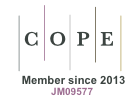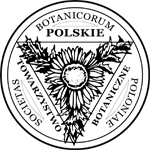Abstract
In the investigated material, consisting of 143 honey samples, pollen grains of 109 taxa were identified; 80 were represented by nectariferous plants and 29 by non-nectariferous plants. In the pollen of nectariferous plants, 17 anemophilous and 12 entomophilous taxa were found. In particular honey samples, from 1 up to 13 taxa were noted. The identified pollen grains came from plants belonging to 19 botanical families. The most frequently represented families were as follows: Rosaceae, Poaceae and Ranunculaceae. The percentage proportion of pollen of non-nectariferous taxa varied and it was within a range of 0.3% to 69.4%. The highest average frequency among anemophilous plants was demonstrated by the pollen of Poaceae (others), Quercus and Rumex, whereas among entomophilous plants by the pollen of Filipendula, Plantago and Fragaria.
Keywords
pollen analysis; honey; non-nectariferous plants; Świętokrzyskie Voivodeship






